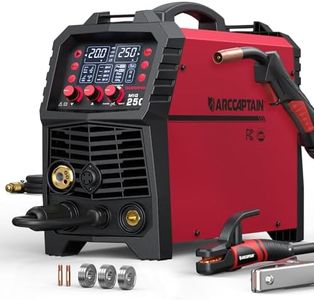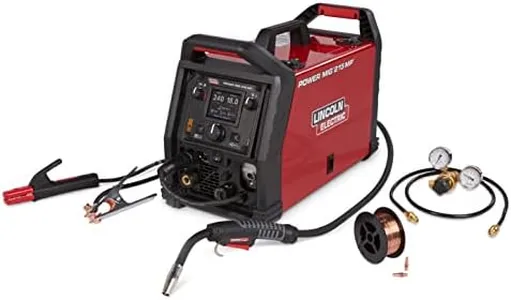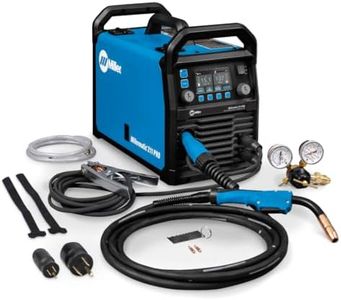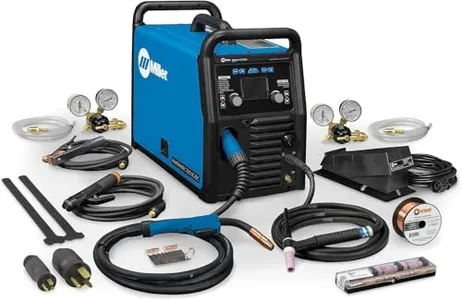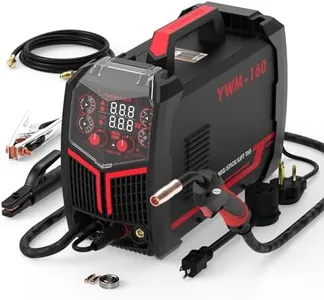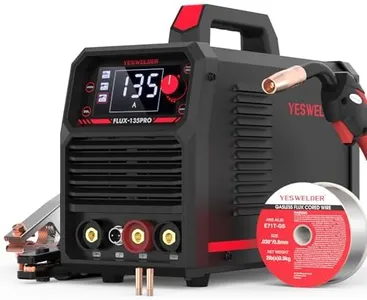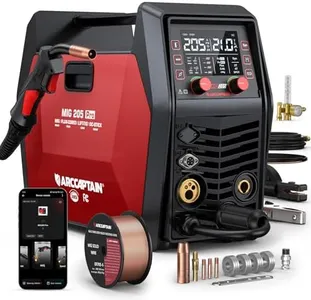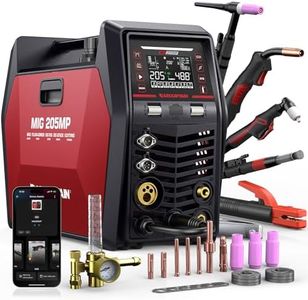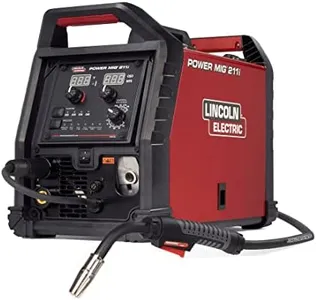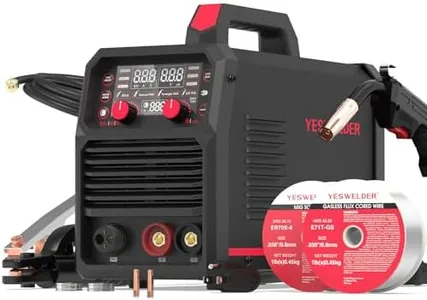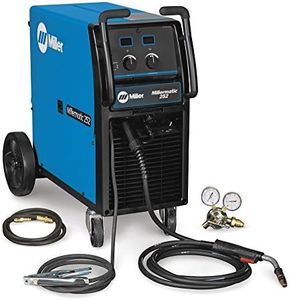10 Best Mig Welders 2025 in the United States
Our technology thoroughly searches through the online shopping world, reviewing hundreds of sites. We then process and analyze this information, updating in real-time to bring you the latest top-rated products. This way, you always get the best and most current options available.

Our Top Picks
Winner
ARCCAPTAIN 250A MIG Welder, 110V 220V Gas MIG/Gasless MIG/Stick/Lift TIG/Spool Gun/Spot 6 in 1 Welding Machine Aluminum Welding Machine Professional Welder Machine with Large LED Display
Most important from
935 reviews
The ARCCAPTAIN 250A MIG Welder is a versatile and powerful welding machine, boasting an impressive amperage range up to 250 amps. Its 6-in-1 functionality, including Gas MIG, Flux Core MIG, Lift TIG, Stick, Spot, and Spool Gun capabilities, makes it suitable for various welding tasks on materials like mild steel, carbon steel, stainless steel, and aluminum. This flexibility can be particularly appealing to both beginners and professionals who may need to switch between different types of welding processes. The Lift TIG torch and spool gun are not included and must be purchased separately.
The machine’s digital controls and intelligent design, featuring an adaptive crater, burn-back adjustment, and pre-flow/post-flow settings, offer enhanced welding stability and efficiency. These features can be especially beneficial for users looking to achieve high-quality welds with ease. Its synergic MIG control further simplifies the welding process by automatically matching the recommended current and wire feed speed based on the selected wire diameter and gas material, making it user-friendly for beginners. Manual MIG settings provide customization options for more experienced welders.
Additionally, the welder comes fully equipped with necessary accessories, allowing users to start welding right out of the box. With a 110V/220V input voltage, it offers flexibility for use in various power settings. The machine is also designed with safety in mind, incorporating protections against overcurrent, overvoltage, overload, and overheating. The unit is fairly lightweight at 10 pounds, enhancing its portability for those who need to move it between job sites. Its compact size (14.9 x 5.3 x 9.7 inches) is a plus for storage.
Most important from
935 reviews
Lincoln Electric K4876-1 POWER MIG 215 MPi Multi-Process Welder
The Lincoln Electric K4876-1 POWER MIG 215 MPi is a versatile, multi-process welder that can handle MIG, Flux-Cored, Stick, and DC TIG welding. This makes it a great option for users who need flexibility for different welding tasks. One of its significant strengths is the dual input voltage capability (120V and 230V), allowing it to be used with most common power supplies, which can be very convenient for various work environments.
The sleek, ergonomic case with multiple lift points enhances its portability, making it easier to move around the shop or job site. Additionally, the built-in TIG solenoid and foot pedal adapter simplify the process of switching to TIG welding, as there's no need for additional installation. The welder's robust and reliable wire drive system ensures consistent and smooth wire feeding, which is crucial for achieving high-quality welds.
However, there are a few drawbacks to consider. While it's quite portable, the case might still be bulky for some users depending on their workspace constraints. The Lincoln Electric K4876-1 POWER MIG 215 MPi is suitable for those needing a reliable, multi-process welder with good portability and flexibility.
Millermatic 211 PRO MIG Welder Machine - Dual-Voltage Portable Flux Core Welder with Auto-Set & Spool Gun Detection - Aluminum, Mild & Stainless Steel Welding Machine - Wire Feed Gas Welder
Most important from
1 reviews
The Millermatic 211 PRO is a versatile MIG welder that works well for both beginners and professionals who need to weld mild steel, stainless steel, and aluminum (with the included spool gun). Its dual-voltage capability (120V and 240V) makes it convenient for use in different locations without extra tools. The Auto-Set feature simplifies setup by automatically adjusting settings, and Smooth-Start technology helps produce clean, spatter-free welds, which is great for users wanting less mess and hassle. The welder has a solid duty cycle that lets you weld longer without overheating, supporting heavier or extended tasks.
Portability is decent for this class of welder, weighing 46 pounds and including a 15-foot MIG gun, which provides a good working range. The built-in spool gun detection is a smart convenience, automatically switching settings when the spool gun is connected, making it easier to weld aluminum without manual changes. The wire feed system supports various wire sizes and types, including flux-cored wire, which adds to its flexibility for different projects.
On the downside, while portable, it’s not the lightest option available, so it might be less comfortable for frequent transport over long distances. Some users new to welding might find the multiple features a bit overwhelming at first, despite the Auto-Set help. Also, since it's a fuel-powered machine, you’ll want to ensure proper ventilation and safety precautions. This machine is a strong choice if you need a reliable, flexible MIG welder for multiple metals and environments, offering a good balance of power, ease of use, and upgrades via USB. It suits hobbyists stepping up their skills and professionals needing a dependable, portable welder for various jobs.
Most important from
1 reviews
Buying Guide for the Best Mig Welders
When choosing a MIG welder, it's important to consider your specific needs and the type of projects you'll be working on. MIG welders are versatile and user-friendly, making them a popular choice for both beginners and experienced welders. To find the best fit for you, you'll need to understand the key specifications and how they impact performance and usability. Here are the main specs to consider when selecting a MIG welder.FAQ
Most Popular Categories Right Now


